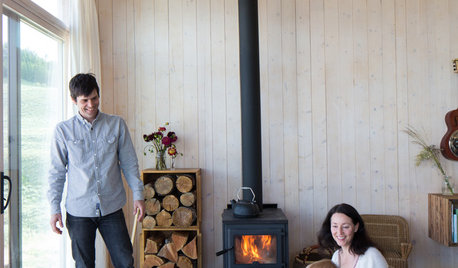How Close to Dig Near Trees?
achang89
9 years ago
Related Stories

GARDENING GUIDESGarden Myths to Debunk as You Dig This Fall and Rest Over Winter
Termites hate wood mulch, don’t amend soil for trees, avoid gravel in planters — and more nuggets of garden wisdom
Full Story
ECLECTIC HOMESHouzz Tour: A New Look for Former Student Digs
An ill-treated Victorian in England becomes a more open, extended and aesthetically appealing family home
Full Story
BACKYARD IDEASTake a Peek: A Peaceful Backyard Near Puget Sound
Behind a screen of bamboo trees, discover a peaceful garden retreat in the Pacific Northwest
Full Story
HOME OFFICESRoom of the Day: Digging Emerald in a Chic Atlanta Office
Green accents tickle a mom and her toddler pink in this office and playspace insired by high fashion
Full Story
REMODELING GUIDESHow to Dig Down for Extra Living Space
No room for a ground-level addition? See if a finished basement is a good idea for you
Full Story
DECORATING GUIDESThe '70s Are Back. Can Ya Dig It?
No need to cringe. These 21 groovy blasts from the past are updated to look fabulous today
Full Story
HOUZZ TOURSMy Houzz: Super Efficiency and Serenity Near the Florida Surf
It can withstand a hurricane and earned LEED Platinum certification, but this island home knows how to chill too
Full Story
DECORATING GUIDES10 Easy Fixes for That Nearly Perfect House You Want to Buy
Find out the common flaws that shouldn’t be deal-breakers — and a few that should give you pause
Full Story
HEALTHY HOME6 Tips From a Nearly Zero-Waste Home
Lower your trash output and increase your quality of life with these ideas from a mom who did it to the max
Full Story
HOUZZ TOURSHouzz Tour: Family Builds Off the Grid Near the Cascade Mountains
Homeowners carefully construct a weekend home on 20 acres in remote northeast Washington
Full Story






agkistrodon
wisconsitom
Related Professionals
Norwood Landscape Contractors · Huntley Landscape Contractors · Paramus Landscape Contractors · Westchester Landscape Contractors · Northlake Landscape Contractors · Carmichael Fence Contractors · Gresham Fence Contractors · Long Beach Fence Contractors · Saginaw Fence Contractors · South Miami Fence Contractors · West Covina Fence Contractors · Berkeley Siding & Exteriors · Bountiful Siding & Exteriors · Callaway Siding & Exteriors · Madison Siding & Exteriorsachang89Original Author
rhizo_1 (North AL) zone 7
wisconsitom
floral_uk z.8/9 SW UK